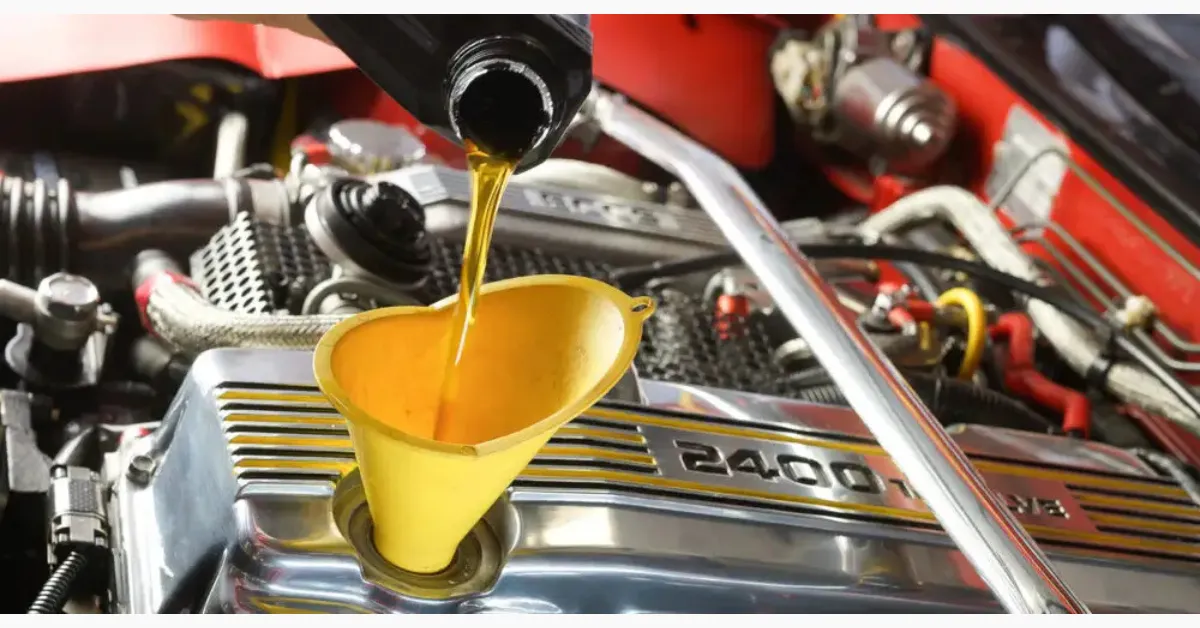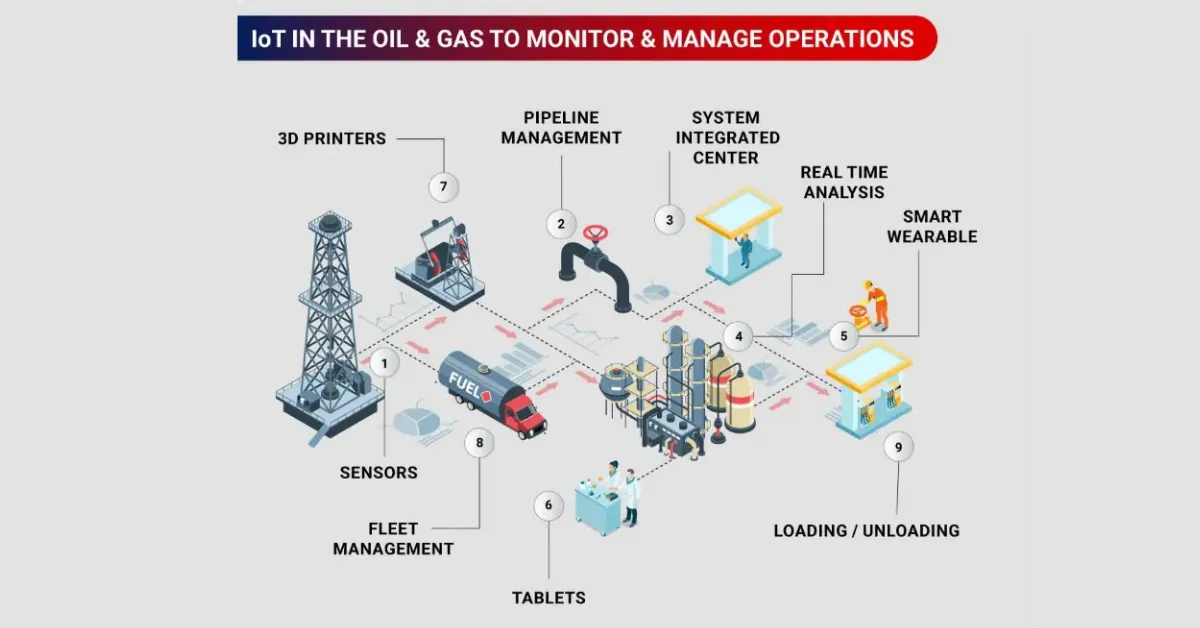Mastering How to Dispose of Motor Oil: A Comprehensive Guide for Environmental Stewardship
We can’t live without motor oil. It’s essential to run vehicles and equipment. In fact, Americans produce 1.3 billion gallons of oil every year.
But what happens to it after an oil change can have serious consequences for the environment.
Used motor oil is part of our everyday junk. And we know that junk removal benefits the environment, but how?
According to the EPA, one oil change dumped in water can contaminate up to one million gallons of water. That’s enough supply for 50 people. Unfortunately, according to MDEQ, 40% of the pollution in America’s waterways comes from the disposal of motor oil.
Motor oil disposal isn’t that challenging if you follow the right steps. Luckily, there are different environmentally friendly ways to get rid of motor oil so it doesn’t end up in a landfill or a water body. In fact, re-refining used oil saves up to 85% of the energy that would otherwise be needed to produce virgin oil.
This comprehensive guide will cover the challenges faced by DIY oil changers, discuss future technologies in oil disposal, and examine the economic and geopolitical implications of oil recycling. Asking how to dispose of motor oil? We’ve got you.
Get a Live Quote Now
Connect to a live representative and get a quote in real time for junk removal in your area.Table of Contents
TL;DR
- Used motor oil contaminates soil, water and air.
- The long-term impact of improper motor oil disposal can last for decades.
- Recycling motor oil changes it from a hazardous waste to an energy source and a chemical compound that can be used in various industries.
- Proper handling and storage of motor oil facilitates legal and proper disposal.
- Motor oil disposal is a growing industry that has a huge geopolitical impact.
- New technologies will change how we handle motor oil and improve its recycling rate.
- The black market of oil disposal can decrease with the implementation of new policies and recycling initiatives.
Environmental Impact of Improper Disposal
Before discussing proper oil disposal methods, we should understand why it’s considered a hazardous substance.
Used motor oil contains heavy metals and toxic chemicals. They can immediately affect wildlife, but only get worse. These components can persist in the environment for years.
As a matter of fact, one pint of improperly dumped motor oil can create an oil slick covering an acre of water surface. Now imagine how this can affect vegetation and other living creatures.
At Jiffy Junk, we always follow green practices to help our clients get rid of their junk, making sure it doesn’t end up in a landfill or a nearby lake. This aligns with our environmentally-focused initiative, where we’ve sponsored the planting of more than 15,000 trees.
This is why we advocate responsible disposal of motor oil. After being processed and properly recycled, one gallon of used motor oil can produce up to 2.5 quarts of lube. This is way less than the 42 gallons of crude oil required to produce the same amount.
Soil Contamination
Let’s look further at what happens when you just discard motor oil. Many people think that dumping into their backyard won’t have a permanent effect on the soil. They are wrong.
Oil seeps into the soil, affecting its composition and fertility. Studies show that it can affect soil porosity, thus affecting water retention and root growth. Oil-contaminated soil contains high concentrations of toxic compounds like benzene and toluene. These compounds affect organisms living in the soil.
Bioaccumulation in Food Chains
The effect of leaked motor oil doesn’t stop at the soil level. The concentration of toxins and contaminants magnify in higher organisms, including humans. Some contaminants in motor oil can increase in concentration by a factor of 10 at each step in the food chain.
For example, you’d think that dumping some oil into a nearby pond doesn’t have much impact. Here’s what happens.
Algae absorb the oil's toxins, which are then consumed by small fish. Larger predatory fish eat these smaller fish, concentrating the toxins further. Finally, birds or humans consuming these fish receive the highest dose of contaminants.
This illustrates the dangerous progression of bioaccumulation. Studies show that polycyclic aromatic hydrocarbons (PAHs) from motor oil can accumulate in fish tissues at levels 100,000 times higher than in the surrounding water.
Long-term Soil Remediation Challenges
After dumping motor oil into the soil, it takes months or even years to restore it to its original condition. The time taken depends on the soil type and contamination levels. However, several techniques can help with the restoration process. Their impact varies in effectiveness, as it all depends on the soil structure. Here’s a summary of some of these methods.
| Remediation Method | Time Frame | Effectiveness | Environmental Impact |
|---|---|---|---|
| Bioremediation | 6mo - 5yrs | 70-90% | Low |
| Thermal Desorption | 1-3 months | Up to 99% | Moderate |
| Phytoremediation | 3-5 years | 60-80% | Very Low |
Water Pollution
Motor oil runoff has a major impact on aquatic ecosystems and drinking water resources. Research found a quart of motor oil can contaminate up to 250,000 gallons of drinking water.
Oil pollution also reduces dissolved oxygen levels which aquatic animals and plants need to live. On the other hand, groundwater can stay contaminated and polluted for decades after oil is dumped into water bodies.
Understanding how junk removal services work is the key. Luckily, Recycling Product News reports on a new technology that not only disposes of used motor oil safely but also generates clean electricity, potentially revolutionizing how we handle this hazardous waste.
Oil Sheen Formation
Oil sheen forms when oil is disposed of improperly. By dumping as little as 1 milliliter of oil, an oil sheen can form and spread over 1 square meter of water surface.
So, how does it affect the environment?
Oil sheens reduce light penetration in water. As a result, it affects photosynthesis in aquatic plants and messes up aquatic animals' natural cycles. In the absence of plants, fish and birds that feed on them will suffer. The result? A messed-up ecosystem that can spiral out of control.
This is why the EPA classifies any visible oil sheen as a reportable quantity, requiring immediate notification to authorities.

Improper methods of motor oil disposal harms all living things.
Source: gte.sg
Groundwater Contamination
Unfortunately, some people don’t understand the aftermath of their inadequate junk removal practices. They can dump things in their backyard and think that it’s doing no harm.
This is why at Jiffy Junk, we take our yard waste removal services very seriously. We make sure that nothing impacts the soil and the ecosystem by prioritizing eco-friendly practices and recycling.
So, what happens when you take some of the used motor oil and dump it behind the nearest tree? The oil doesn’t stop there. It seeps into the soil and can travel long distances a year, depending on its composition.
Eventually, the leaked soil contaminates natural springs and wells. Groundwater contaminated with motor oil can require treatment for decades to meet drinking water standards.
Air Quality Degradation
Do you think damage from improper motor oil disposal is restricted to soil and water? Think again.
Although it’s less obvious, inadequate motor oil disposal causes air pollution by releasing VOCs into the air. Moreover, oil-contaminated soil can emit methane, a greenhouse gas more potent than CO2, for years after contamination.
But that’s not all. Burning waste oil can release toxic metals into the air at concentrations higher than burning virgin fuel oil.
Volatile Organic Compound (VOC) Emissions
When you discard motor oil, it releases VOCs into the atmosphere. This contributes to smog and respiratory issues. Used motor oil can contain up to 10 times more VOCs than new oil due to breakdown during use.
And the dangers start even before you discard motor oil. When you store it in the basement or the garage, indoor storage of used motor oil can lead to VOC concentrations higher than outdoor levels. This is why our garage cleanout services and basement cleanout services will help you handle all types of junk removal including used motor oil when it’s properly stored.
In a poorly ventilated garage where used motor oil is improperly stored, VOC levels can reach harmful concentrations. A homeowner spending time in this space may experience headaches, dizziness, or respiratory irritation.
Moreover, VOCs from improperly stored used oil can contribute to ground-level ozone formation, exacerbating respiratory conditions.

American households produce millions of gallons of motor oil annually, this is why proper oil disposal is a must.
Source: Unsplash
The Recycling Revolution: Turning Waste into Resource
So, what is the best way to handle motor oil? How to dispose of motor oil without breaking any laws or hammering the environment?
According to the EPA, recycling used motor oil requires only one-third of the energy needed to refine crude oil to lubricant quality. This oil disposal concept perfectly aligns with our policies at Jiffy Junk, where we highlight the preservation of energy.
For example, with our seasonal dumpster rental services, you can plan things with your neighbors to remove larger quantities of junk (and even motor oil disposal) in one go. Less energy is required and more junk can be removed.
Also, recycled oil meets the same API (American Petroleum Institute) standards as virgin oil products according to Valvoline. At the same time, recycling used motor oil requires 85% less energy than refining crude oil to lubricant quality.
Re-refining Processes
Re-refining can process used oil with contaminant levels by removing impurities to less than 1 part per million. Luckily, modern facilities can process millions of gallons of used oil annually. Now, almost 40% of used oil is handled this way to refurbish it into high-quality oil.
This process can reduce greenhouse gas emissions significantly. Here’s a summary of different re-refining processes.
| Re-refining Stage | Process | Efficiency | Output Quality |
|---|---|---|---|
| Dehydration | Heating | 99% | Water-free oil |
| Fuel Stripping | Vacuum distillation | 95% | Fuel-grade distillates |
| Vacuum Distillation | Fractional distillation | 85% | Base oil fractions |
| Hydrotreating | Catalytic hydrogen treatment | 99% | API-grade base oil |
Vacuum Distillation
Vacuum distillation can separate used oil into fractions at temperatures 100-150°C lower than atmospheric distillation. This process offers faster processing times and can recover most of the original oil volume as base oil suitable for re-use.
Hydrotreating
Hydrotreating is another re-refining process. It can reduce sulfur content in used oil from 0.5% to less than 0.03%, meeting stringent environmental standards. Catalytic hydrotreating can improve viscosity index and improve its lubricating properties.
Alternative Uses for Recycled Oil
After recycling, recycled motor oil can replace 25% of virgin oil in some industrial lubricant formulations without performance loss. When used as a fuel, recycled oil has a heat value of approximately 140,000 BTU per gallon, comparable to diesel fuel.
This recycled oil is included in asphalt mixtures, improving durability and reducing the need for virgin petroleum products.
Asphalt Production
When added to asphalt mixtures, recycled motor oil can increase resistance to thermal cracking by up to 40%. As it lowers the mixing and compaction temperatures, energy consumption and emissions reduce.
Adding 3% to 7% of recycled motor oil increases rutting resistance by 25% compared to conventional asphalt mixes.
The DIY Dilemma: Home Oil Change Considerations
Do you have some old motor oil from your vehicle? DIY oil changers generate approximately millions of gallons of used motor oil annually in the US. This oil can be left forgotten in your basement or garage for years, although it’s slowly contaminating the environment.
But it shouldn't be. At Jiffy Junk, even our decluttering services ensure that oil finds its way to the nearest waste management facility. After that, it will be recycled and disposed of properly without harming the environment.
Take John for example. As a car enthusiast, he performs regular oil changes on his vehicles. He uses a dedicated oil pan to catch the used oil, then transfers it to a clean, labeled plastic container.
John stores the container in his garage, away from heat sources and children's reach. Every few months, he takes the accumulated oil to his local auto parts store for recycling, ensuring responsible disposal and environmental protection. Be like John.
Safe Collection and Storage
So, how can oil be collected and stored? A typical passenger car oil change produces 4-5 quarts of used oil, which should be collected in a container at least 1 gallon in capacity.
Storing used oil at temperatures below 50°F can increase its viscosity, making it harder to pour and potentially leading to spills. Proper labeling of used oil containers can reduce the risk of accidental misuse.
Here’s a checklist for safe oil collection and storage.
- Use a clean, leak-proof container with a tight-fitting lid to prevent accidental spills.
- Label the container clearly as "Used Motor Oil."
- Store the oil in a cool, dry place away from heat sources and living areas.
- Keep out of reach of children and pets.
- Avoid mixing with other fluids or contaminants.
- Check containers regularly for leaks or damage.
You can check out this video to learn how to collect used motor oil properly.
Choosing the Right Container
Picking the right container is essential for proper oil collection and storage. High-density polyethylene (HDPE) containers can safely store used motor oil for up to 3 years without degradation. Containers with a minimum wall thickness of 1/16 inch can withstand the corrosive effects of used oil for extended periods and prevent leaks.
It’s also important to use containers with child-resistant caps, which can reduce the risk of accidental spills or ingestion.
Once you’ve stored your motor oil, you can give us a call at Jiffy Junk to schedule an appointment for motor oil removal. We’re currently using AI to streamline the booking process and make it more straightforward.
Avoiding Cross-Contamination
While storing your motor oil, you should avoid mixing it with other fluids. Even 1% of any other fluid can render the entire batch unsuitable for re-refining,
Separating used oil from other fluids improves its recycling efficiency. At the same time, cross-contamination can increase the cost of recycling by up to 50% due to additional processing requirements.
Local Disposal Options
Did you know that most US households are near a used oil collection site? Proper local disposal can prevent up to millions of gallons of used oil from being improperly discarded annually.
Community collection events do more than teaching people how to properly dispose of motor oil. They can capture up to 5,000 gallons of used oil a day. And with Jiffy Junk, this can be easy. Our contractors are located almost everywhere. We’re always expanding to reach you wherever you are.

Learning how to properly dispose of motor oil is a crucial part of DIY oil changes.
Source:counterman.com
Auto Parts Stores and Service Centers
Auto parts stores collect millions of gallons of used oil annually through customer recycling programs. These programs guarantee that participating stores can accept your used oil to reduce the illegal dumping of motor oil in local communities.
Meanwhile, our franchise program is expanding by allowing more contractors to join our Jiffy Junk team. Jiffy Junk’s franchising ranks no. 366 on 2024 Inc. 5000. This means more facilities to cooperate with local businesses to dispose of motor oil without impacting local and national communities.
Community Collection Events
At Jiffy Junk, we understand that disposing of used motor oil should be a collective effort. We work with the best local contractors in your community and will help guide your used motor oil to the right recycling facilities.
Community collection events can capture most of the locally generated hazardous waste, including used motor oil. Most of these events happen multiple times a year. They prevent the waste from ending up in a landfill or a waterbody to keep the environment safe.
The Future of Motor Oil Disposal
New technologies have always been part of the waste management industry. Of course, this continues to contribute to why junk removal is never really free. But in any case, the future matters!
Machines used to collect and sort waste play a significant role in making the process easier and faster. So, we expect new tools, technologies, and machines to improve the recovery rate of used oil and minimize waste.
The waste oil market is booming. It is expected to grow from $45.94 billion in 2022 to $64.83 billion by 2023. This also means that the amount of improperly disposed motor oil is expected to decrease. As a result, the disposal methods will reduce the carbon footprint of oil recycling.
Biodegradable Motor Oils
Besides working on ways to dispose of used motor oil, companies are also developing new biodegradable oils. These oils can decompose faster and don’t have a lasting negative impact on the environment.
Luckily, experiments revealed that some current biodegradable oils match the performance of conventional oils in most applications.
Plant-Based Formulations
More industries are currently shifting towards plant-based formulations. In 2024, Japan launched its first plant-powered racing engine oil, and applications revealed that it’s 194% stronger than the traditional formulas.
While still a new technology, depending on plant-based motor oils signifies a major shift away from fossil fuels. In general, these innovative oils have a viscosity index 20-40 points higher than mineral-based oils, which improves efficiency.
Moreover, they’re expected to extend oil change intervals by up to 50% compared to conventional oils. This means less waste oil overall.
Engineered Microorganisms
Relying on engineered bacteria can help degrade most oil contaminants in the soil, under optimal conditions. Scientists are also experimenting with these bacteria to dispose of cooking oil.
These microorganisms can be tailored to target specific components of motor oil. Moreover, bioluminescent markers in engineered bacteria allow real-time monitoring of oil degradation progress.
Smart Disposal Systems
AI has been altering almost every industry, and we expect it also to take part in improving the efficiency of sorting and disposal systems. These advanced systems can increase recycling efficiency and reduce contamination.
IoT-enabled collection points can reduce pickup costs. These systems can detect and alert operators to contamination issues with more accuracy. We can’t wait to see what the future holds for junk removal services.

New technologies will change how we handle and dispose of motor oil.
Source: Rishabsoft.com
The Hidden Economics of Oil Disposal
Besides benefiting the environment, proper oil recycling can generate billions of dollars. The hidden costs of improper disposal, including environmental remediation, can exceed $10 billion annually.
In fact, research shows that one user can earn $595 after recycling one ton of waste oil. Moreover, this industry can create multiple jobs to benefit the economy.
Extended Producer Responsibility
Extended Producer Responsibility or EPR programs can increase oil recycling rates to reach 50% of disposed of oil by 2025. These initiatives can reduce government spending on disposal management and increase product innovation focused on recyclability.
Deposit-Refund Systems
Deposit-refund systems are currently used to handle different kinds of waste. They can be used to encourage people to dispose of batteries properly, and tires, beverage cans, and motor oil.
These systems cause higher oil return rates compared to voluntary programs because the refund motivates more consumers to return used oil.
Lifecycle Pricing Models
Lifecycle pricing can increase funding for recycling infrastructure. It adds a small percentage to the cost of motor oil but reduces long-term environmental expenses. Implementing lifecycle pricing can accelerate the adoption of eco-friendly oil formulations.
Black Market Oil Operations
On the other hand, another challenge lies in black market oil operations. Illegal oil disposal activities cost legitimate recycling businesses millions of dollars. This is why tackling these practices can increase recycling volumes.
Fuel Adulteration
Fuel adulteration can damage engines due to reduced efficiency. Additionally, this practice increases harmful emissions.
Underground Disposal Networks
Underground disposal networks represent another hazard. These networks can dispose of millions of used oil illegally, where they eventually end up contaminating the environment.
These operations typically charge 50-70% less than legitimate disposal services, undercutting the legal market. However, their long-term costs are way higher.
Geopolitical Implications of Oil Recycling
Widespread adoption of oil recycling could reduce global crude oil demand. It can significantly impact political and economic relationships between countries and entities. Moreover, large-scale recycling operations could create over 50,000 new jobs globally in the next decade.
Resource Independence
Advanced recycling techniques can recover up to 99% of used oil, significantly reducing the need for virgin oil imports. Investing in oil recycling infrastructure can yield a massive return on investment.
Strategic Reserves of Recycled Oil
Recycled oil reserves can be stored for up to 5 years without significant quality degradation. A strategic recycled oil reserve could provide up to 30 days of national lubricant needs in emergencies. Maintaining recycled oil reserves can reduce a nation's vulnerability to oil supply disruptions.
At Jiffy Junk, we understand the importance of recycling. You can click here to learn more about USA’s recycling and disposal statistics to get a clearer picture.
International Trade of Reclaimed Oil
Global recycled oil trade is expected to increase. Countries with advanced recycling capabilities could see an increase in their balance of trade related to oil products.
Regulatory Harmonization Challenges
Focusing on recycling motor oil is becoming a global necessity. This is why harmonizing regulations could reduce compliance costs for multinational companies.
As a result, the unified standards could boost the global recycled oil market. Nevertheless, these regulations take a few years to implement and require massive cooperation.
Learnings Recap
We’ve finally reached the end of our comprehensive guide on how to dispose of motor oil. Motor oil is an everyday waste that shouldn’t end up in a landfill or water body because of its long-lasting impact on the environment. Plus, the emissions from oil components will pollute the air.
The whole idea is to stop viewing motor oil as a waste or liability and start seeing its potential. This is what we’re all about at Jiffy Junk. We offer residential junk removal services and commercial junk removal services to keep every space clean and direct your waste to the nearest recycling facility to protect the environment.
Here’s what you need to learn about disposing of motor oil responsibly:
- Proper motor oil disposal is crucial for environmental protection and resource conservation.
- Advanced recycling technologies can transform used oil into a valuable resource.
- Several factors should be considered while collecting and storing motor oil for the best results.
- Economic incentives and regulatory frameworks play a vital role in promoting responsible oil disposal.
- The future of oil disposal involves innovative technologies and sustainable practices.
- Global cooperation is essential for maximizing the benefits of oil recycling and minimizing environmental impact.
What Jiffy Junk Brings to the Table
We understand that the cost of junk removal (even down to the hazardous waste removal) can be an obstacle. This is why at Jiffy Junk, we offer groundbreaking financing options to help you manage your waste without breaking the bank.
If you aren’t sure about how much your junk removal job will cost, click the bell at the bottom left corner and you’ll immediately be connected to one of our professionals. We’ll have a video call to estimate the nature of your job and give you a clear estimate of how much it will cost.
We encourage you to check our blog regularly to discover effective junk removal strategies that can help when the time comes to take care of junk.
Keep your space clean and free of dangerous waste. You can explore our comprehensive decluttering guide to help manage your garage and storage areas where used motor oil might accumulate.
Our comprehensive services cover many types of waste, including motor oil disposal and more. So no matter what you’re aiming for, we’ve got your back and are ready to handle the particulars for you. If you’re ready to clean up your space, remember you don’t have to break the law or risk your health in order to dispose of motor oil. From properly disposing of old appliances, to furniture removal and more, you can book us anytime!
More from Jiffy Junk
Robust Service
Interested in Getting Started?
Have a big cleanout job that needs to be done right away? Contact us today. We'll get rid of your junk in a jiffy!
Fast & Reliable
What Our Customers Are Saying
Thousands of satisfied customers across America have shared their Jiffy Junk Experience.





